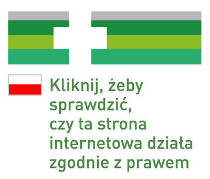Diabetes mellitus 2 Pathogenese
Diabetes mellitus type 2 (also known as type 2 diabetes) is a long-term metabolic disorder that is characterized by high blood sugar, insulin resistance, and relative lack of insulin. Common symptoms include increased thirst, frequent urination, and unexplained weight.A. Fritsche, C. Thamer, N. Stefan and H.-U. Häring, Gen-Umwelt-Interaktion in Pathogenese und Prävention des Diabetes mellitus Typ 2 Gene-environment interactions in the pathogenesis and prevention of type 2 diabetes mellitus, Der Internist, 10.1007/s00108-007-1874-1, 48, 7, (669-675), (2007).Die Pathogenese des Diabetes Mellitus Die Endokrine Regulation des Fettstoffwechsels Zwölftes Symposion der Deutschen Gesellschaft für Endokrinologie Zugleich Zweite Jahrestagung der Deutschen Diabetes-Gesellschaft in Wiesbaden.Sixty-seven papers originally presented at a symposium held in Wiesbaden, Germany, in April 1966. About one third are on topics in diabetes mellitus (immunological aspects of insulin, pathogenesis, prediabetes, other miscellaneous topics) and fat metabolism. The rest discuss laboratory and clinical.Samenvatting Hoofdstuk 20 Interne Geneeskunde over Diabetes Mellitus inclusief handige tabellen en grafieken uit het boek. Onderdelen 1. Normale glucosestofwisseling 2. Diagnostiek 3. Pathogenese 4. Behandeling 5. Acute ontregeling.Gestational diabetes mellitus (GDM) is defined as glucose intolerance of variable severity with onset or first recognition during pregnancy Women with GDM represent a heterogeneous group. A proportion has unrecognized pre-existing non-insulin-dependent diabetes (type 2) and a small number has insulin-dependent type 1 diabetes, with onset.Note: Citations are based on reference standards. However, formatting rules can vary widely between applications and fields of interest or study. The specific requirements or preferences of your reviewing publisher, classroom teacher, institution or organization should be applied.{{language_data.label_navi_more}} {{language_data.label_navi_less}}.
Diabetes und seine Prävention
In this study, we investigated the oxidative stress-related parameters in type 2 diabetes. Our findings suggest that diabetes patients have more severe oxidative stress than healthy persons. Elevated oxidative stress was reported in diabetes patients and in animal models of diabetes The possible sources of increased oxidative stress might.Les altérations de l’insulinosécrétion sont le dénominateur commun de toutes les formes de diabètes [7]. Elles apparaissent tôt dans l’histoire du diabète de type 2, dès le stade de l’hyperglycémie modérée à jeun et l’intolérance au glucose, et chez les parents au premier degré de patients atteints de diabète.Exp Clin Endocrinol Diabetes. 2001;109 Suppl 2:S149-56. Pathogenesis of type 2 diabetes mellitus. Dostou J(1), Gerich J. Author information: (1)Department.Nov 5, 2018 Type 2 diabetes mellitus is characterized by hyperglycemia, insulin resistance, and relative impairment in insulin secretion. It is a common .Diabetes mellitus type 2 is een veelvoorkomende volksziekte, waarbij het risico om de ziekte te ontwikkelen wordt gekenmerkt door een combinatie van aangeboren factoren en lifestyle- factoren. In de afgelopen 2 jaar zijn enkele genetische risicofactoren in kaart gebracht die een nieuwe kijk geven op de pathogene processen die ten grondslag liggen aan de ziekte.Differential expression network analysis for diabetes mellitus type 2 based on expressed level of islet cells Diabète de type 2 : Diabetes mellitus type 2 gene are associated with the conversion from impaired glucose tolerance to type 2 diabetes. The Finnish Diabetes Prevention Study. Diabetes, 54 (2005), pp. 2256-2260.Diagnostik und Pathogenese des Diabetes mellitus Typ 2. Roger Lehmann, Giatgen A. Spinas. Departement für Innere Medizin, Abteilung für Endokrinologie .Nat Rev Endocrinol 2010 May 30;6(5):279-89. Epub 2010 Mar 30. Laboratoire de Virologie/EA3610 "Pathogenèse Virale du Diabète de Type 1", Faculté de Médecine, Université Lille 2, CHRU Lille, Centre de Biologie et Pathologie et Institut Hippocrate Parc Eurasanté, Boulevard du Prof J Leclercq, 59037 Lille Cedex, France.
You may look:-> Erste Hilfe bei hypoglykämischem (diabetischem) Koma
Please use one of the following formats to cite this article in your essay, paper or report: APA. Mandal, Ananya. (2019, February 26). Diabetes Mellitus Type 1 Pathophysiology.Diabetes Typ 2 Pathogenese Pre Smoking. Diabetic Ketoacidosis Icd 9 What Is grapefruit 3 x a day to avoid this chronic ailment. Goals and Outcomes of Medical Nutrition Therapy for Diabetes.INTRODUCTION. Type 1A diabetes mellitus results from autoimmune destruction of the insulin-producing beta cells in the islets of Langerhans [].This process occurs in genetically susceptible subjects, is probably triggered by one or more environmental agents, and usually progresses over many months or years during which the subject is asymptomatic and euglycemic.Diabetes mellitus Typ 2 Pathogenese Behandlung Prof. Dr. Stephan Martin. Westdeutsches Diabetes- und Gesundheitszentrum (WDGZ) Düsseldorf Anzahl der Menschen mit Diabetes weltweit und nach Ländern im Jahr 2017 und 2045 (20 -79 Jahre) Diabetes – eine globale Gefahr.Note: Citations are based on reference standards. However, formatting rules can vary widely between applications and fields of interest or study. The specific requirements or preferences of your reviewing publisher, classroom teacher, institution or organization should be applied.At least eight distinct pathophysiologic abnormalities have been associated with type 2 diabetes mellitus (T2DM). It is well established that decreased peripheral glucose uptake (mainly muscle) combined with augmented endogenous glucose production are characteristic features of insulin resistance. Increased lipolysis, elevated free fatty acid levels, along with accumulation of intermediary.Diabetes mellitus Typ 2 (Typ 2 Diabetes) ist charakterisiert durch einen chronischen Hyperglykämie und Insulin-Resistenz, kombiniert mit einer beeinträchtigten Insulin-Sekretion. Häufige Ko-Morbiditäten des Typ 2 Diabetes sind Adipositas/Adipositas, arterieller Bluthochdruck, Fettstoffwechselstörungen (Hypertriglyzeridämie, niedriger HDL-Cholesterinspiegel, erhöhtes LDL-Cholesterin.Die *FREE* shipping on qualifying offers.
-> Bei Diabetes können Ihre Füße weh tun?
Bullous disease of diabetes (bullosis diabeticorum) is a distinct, spontaneous, noninflammatory, blistering condition of acral skin that is unique to patients with diabetes mellitus. Kramer first reported bullous-like lesions in diabetic patients in 1930; Rocca and Pereyra first characterized this as a phlyctenar (appearing like a burn-induc.Epidemiologie des Diabetes mellitus Typ 2 (Typ 2 Diabetes) Bei der Pathogenese der mikrovaskulären Komplikationen des Diabetes wie Retinopathie, Nephropathie und Neuropathie spielt die Qualität der Blutzuckereinstellung eine dominierende Rolle. Für die Vermeidung der Progression einer Nephropathie oder Retinopathie ist zusätzlich.Nov 25, 2014 Type 2 diabetes is better considered as a disease spectrum rather than as a distinct disease entity, and has multiple causes. Hyperglycaemia .Die Pathogenese des Diabetes Mellitus: Die Endokrine Regulation des Fettstoffwechsels Zwölftes Symposion der Deutschen Gesellschaft für Endokrinologie Zugleich Zweite Jahrestagung der Deutschen Diabetes-Gesellschaft in Wiesbaden vom 21. Bis 23. April 1966 (German) Paperback.Type 1 diabetes mellitus (T1DM) is a common disease in which insulin-producing pancreatic β cells are impaired by immune-mediated mechanisms that develop as a result of a complex interaction.Diabetes mellitus Typ 2 ist eine chronisch-progressive Erkrankung, deren Grundlage eine genetisch und umweltbedingte Insulinsekretionsstörung der Betazellen des Pankreas und eine Insulinresistenz.Nov 18, 2004 Throughout the last decade, molecular genetic studies of non‐autoimmune diabetes mellitus have contributed significantly to our present .Samenvatting Interne Geneeskunde, Hoofdstuk 20 Diabetes Mellitus Samenvatting Hoofdstuk 20 Interne Geneeskunde over Diabetes Mellitus inclusief handige tabellen en grafieken uit het boek. Onderdelen 1. Normale glucosestofwisseling 2. Diagnostiek 3. Pathogenese 4. Behandeling 5. Acute ontregeling.
-> So behandeln Sie Erdnuss-Diabetes
Zytokine als pleiotrope Modulatoren in der Pathogenese von Typ 2 Diabetes mellitus und spezifischen vaskulären Komplikationen.der diabetes mellitus Download der diabetes mellitus or read online here in PDF or EPUB. Please click button to get der diabetes mellitus book now. All books are in clear copy here, and all files are secure so don't worry about.Diabetes mellitus type 2 is a long-term metabolic disorder that is characterized by high blood sugar, insulin resistance, and relative lack of insulin. Common .Zusammenfassung. Der Typ 1-Diabetes mellitus ist Folge einer chronisch verlaufenden immunmediierten Erkrankung und wird heute als Autoimmunerkrankung verstanden, bei der es zu einer unwiederbringlichen Zerstörung der Insulin produzierenden β-Zellen kommt.Subsequently, a number of studies found an association between low birth weight and risk of type 2 diabetes mellitus Many authors claimed that the relation between birth weight and type 2 diabetes is inversely linear, implying that high birth weight leads to decreased.Numerous studies have shown that patients with diabetes mellitus have accelerated atherosclerotic vascular disease, and major advances in understanding its pathogenesis have been made. Current suggestions are that endothelial injury may be the initial event in the genesis of atherosclerosis, followed by platelet adhesion and aggregation at the site of injury.Dorpat. Med. Diss 1873. Search the history of over 351 billion web pages on the Internet.Mit Diabetes mellitus bezeichnet man eine Gruppe von metabolischen Erkrankungen, deren gemeinsames Kennzeichen eine Erhöhung der Glucose im Blut (Hyperglykämie) ist. Die beiden wichtigsten Vertreter der Gruppe sind Diabetes mellitus.
-> Wie hoch ist der Blutzuckerwert bei einem Kind?
Background: The purpose of this review is to provide the reader with practical knowledge concerning the relationship between diabetes mellitus and periodontal diseases. Over 200 articles have been published in the English literature over the past 50 years examining the relationship between these two chronic diseases.Diabetes mellitus Typ 2 ist die häufigste Form des Diabetes mellitus (▸ s.Kap.1). Während im Zentrum der Pathogenese des Typ-1-Diabetes die Zerstörung der .Feb 27, 2018 At least eight distinct pathophysiologic abnormalities have been associated with type 2 diabetes mellitus (T2DM). It is well established that .Whether autoimmunity results primarily from a defect of the immune system, target organ dysfunction, or both remains an open issue in most human autoimmune diseases. The highly multigenic background on which diabetes develops in the NOD mouse and in the human suggests that numerous gene variants associate in contributing to activation of autoimmunity to β-cells.Request PDF on ResearchGate | On Sep 28, 2005, R Lehmann and others published Diagnostik und Pathogenese des Diabetes mellitus.Diabetes prevalence has been rising more rapidly in middle- and low-income countries. Diabetes is a major cause of blindness, kidney failure, heart attacks, stroke and lower limb amputation. In 2016, an estimated 1.6 million deaths were directly caused by diabetes. Another 2.2 million deaths were attributable to high blood glucose in 2012**.Der Diabetes mellitus Typ 2 macht sich meist nach dem 40. Lebensjahr erstmals bemerkbar und wurde deshalb früher auch als Altersdiabetes oder Alterszucker bezeichnet. Auslösende Faktoren könnten neben einer genetisch bedingten Prädisposition fettreiche Ernährung, Übergewicht und Bewegungsmangel sein - meist führt eine Kombination dieser.Diabetes mellitus is frequently associated with microvascular complications such as retinopathy, nephropathy, and peripheral neuropathy. Neurotrophic keratopathy occurs in response to a neuropathy.
-> Typ-1-Diabetes
Type 2 diabetes is, or at least was, a disease of the elderly with a peak incidence in the over-60s. The incidence is highest in the 65–69 age group. The largest absolute in-crease in prevalence is found in the 70–79 age group. Today, with increasing obesity, type 2 diabetes mellitus is affecting ever younger patient groups. Translation.Free Shipping on orders over . Buy Die Pathogenese Des Diabetes Mellitus : Die Endokrine Regulation Des Fettstoffwechsels Zw�lftes Symposion Der Deutschen Gesellschaft F�r Endokrinologie Zugleich Zweite Jahrestagung Der Deutschen Diabetes-Gesellschaft in Wiesbaden Vom 21. Bis 23. April 1966 at Walmart.com.Compliance und Disease Management Programme. Praxisbeispiel Diabetes mellitus Typ 2. Verlag für Wissenschaft und Kultur, Stuttgart u. a. 2003, ISBN 3-936749-43-4. Matthias B. Schulze, Kurt Hoffmann u. a.: An Accurate Risk Score Based on Anthropometric, Dietary, and Lifestyle Factors to Predict the Development of Type 2 Diabetes.INTRODUCTION. Type 2 diabetes mellitus is characterized by hyperglycemia, insulin resistance, and relative impairment in insulin secretion. It is a common disorder with a prevalence that rises markedly with increasing degrees of obesity [].The prevalence of type 2 diabetes has risen alarmingly in the past decade [], in large part linked to the trends in obesity and sedentary lifestyle.Request PDF on ResearchGate | Diabetes mellitus Typ 2: Ätiologie und Pathogenese | Diabetes mellitus Typ 2 ist die häufigste Form des Diabetes mellitus ( s.Kap.1). Während im Zentrum.Zusammenfassung. Diabetes mellitus Typ 2 ist die häufigste Form des Diabetes mellitus ( s.Kap.1). Während im Zentrum der Pathogenese des Typ-1-Diabetes die Zerstörung der β-Zellen und das Versagen der Insulinsekretion stehen, wird bei Typ-2-Diabetes als Ursache eine primäre Insulinresistenz bei gleichzeitig gestörter Insulinsekretion angesehen.Insulin resistance often is the primary metabolic abnormality leading to the development of type 2 diabetes.Buy FREE SHIPPING on qualified orders.
Diabetes mellitus 2 Pathogenese:
Rating: 680 / 561
Overall: 893 Rates






